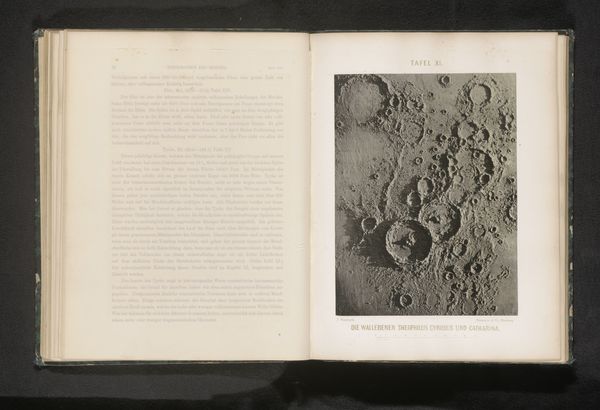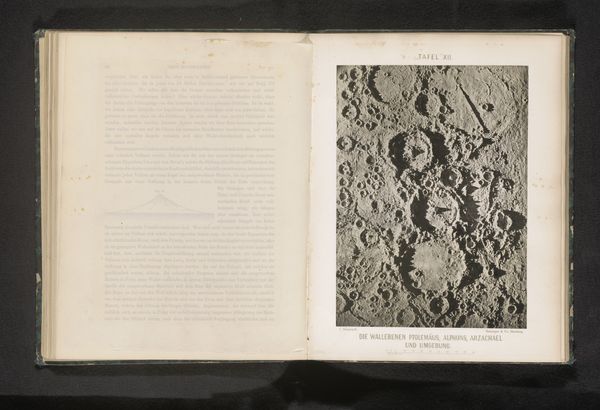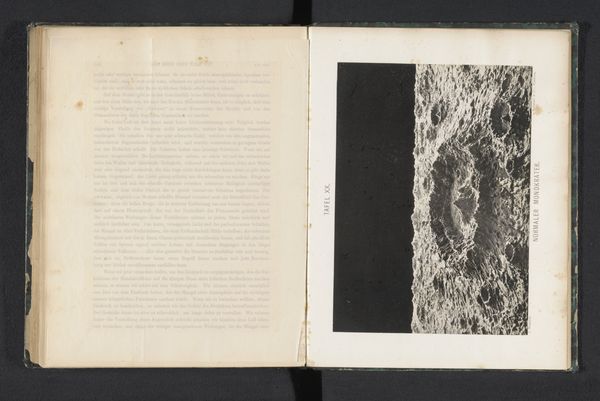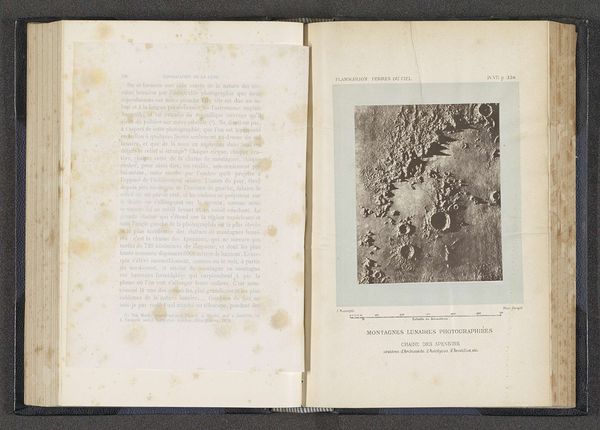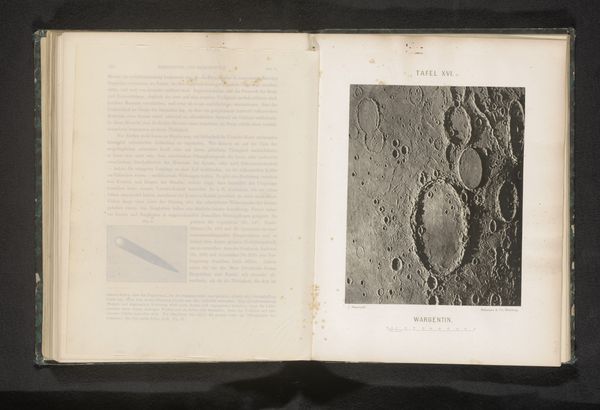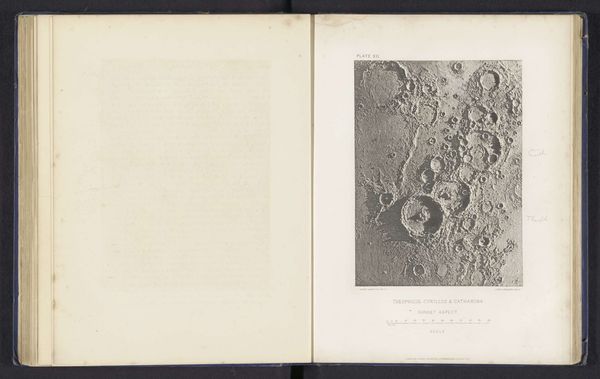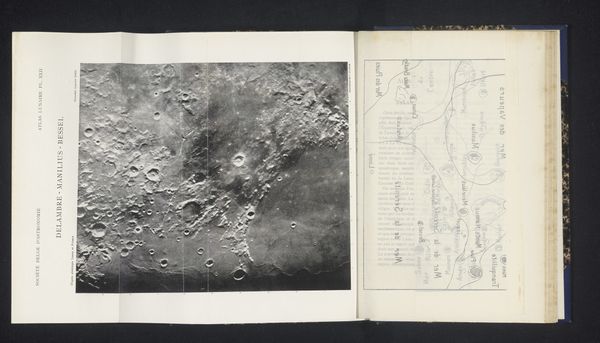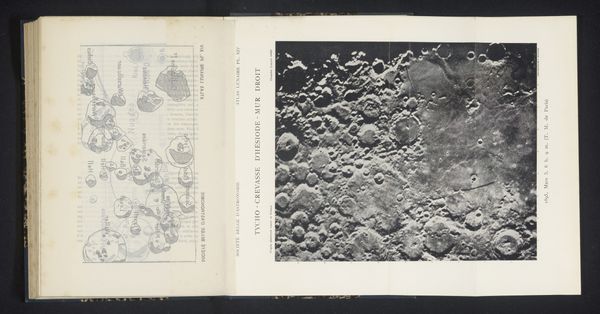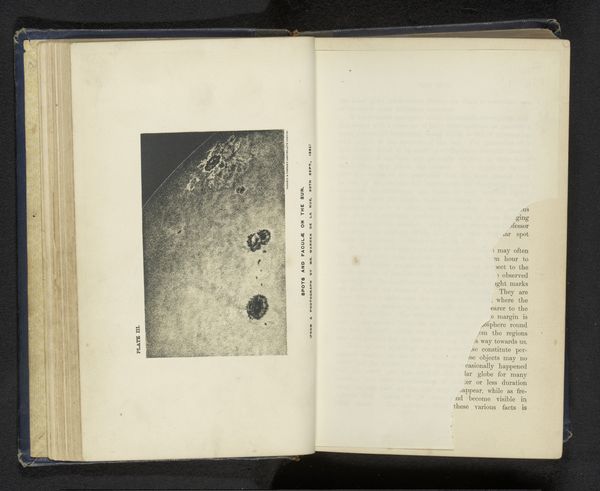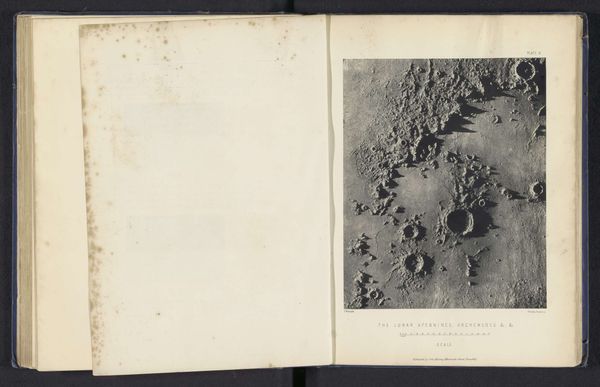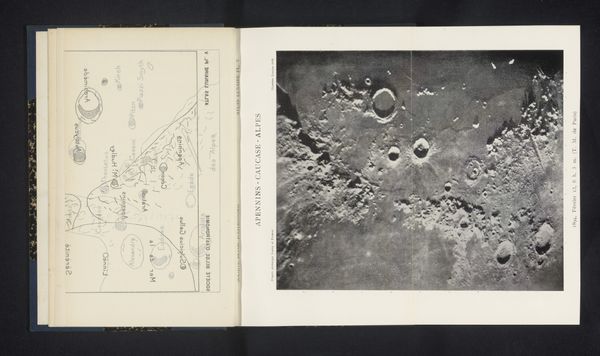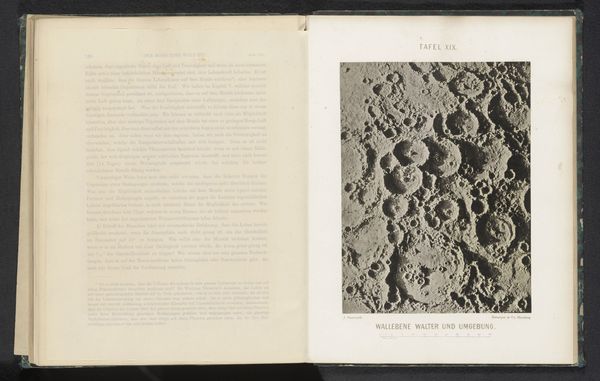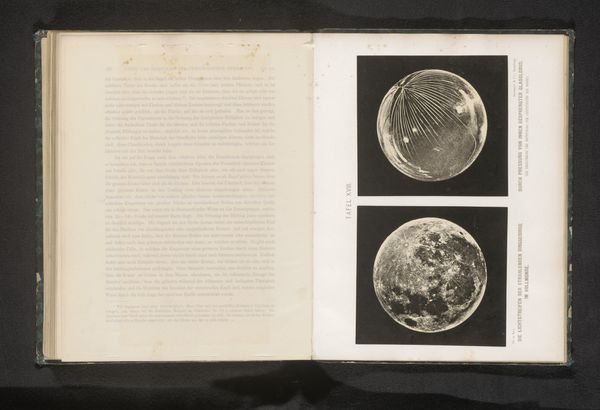
Gipsmodel van de maankraters Mercator en Campanus, van bovenaf gezien before 1873
0:00
0:00
drawing, lithograph, print, paper
#
drawing
#
type repetition
#
aged paper
#
homemade paper
#
lithograph
#
paperlike
# print
#
landscape
#
paper texture
#
paper
#
folded paper
#
thick font
#
paper medium
#
historical font
#
columned text
Dimensions: height 172 mm, width 131 mm
Copyright: Rijks Museum: Open Domain
This is James Nasmyth’s “Gipsmodel van de maankraters Mercator en Campanus, van bovenaf gezien,” or plaster model of the lunar craters Mercator and Campanus, seen from above. During the nineteenth century, as the Industrial Revolution was transforming society, the moon became a popular object of study. Nasmyth, a Scottish engineer and amateur astronomer, captured our celestial neighbor not through direct photography, but through meticulously crafted plaster models based on his telescopic observations. These models then were photographed. Consider this image in relation to the cultural concept of the “man in the moon,” a figure of folklore representing the human desire to find familiar forms in the cosmos. Nasmyth’s work stands at an intersection of science, art, and imagination. He transforms the cold data of scientific observation into something tactile, a way to bring the distant moon within our grasp. In doing so, he invites us to ponder our place in the universe. This work evokes our human longing to explore the unknown, and to see ourselves reflected back from the heavens.
Comments
No comments
Be the first to comment and join the conversation on the ultimate creative platform.
